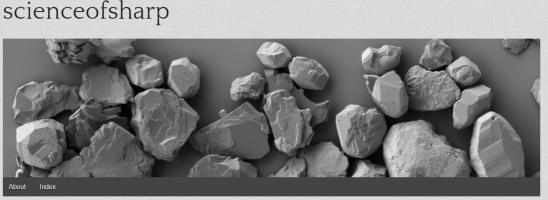A recent thread about strop boards and strop hardness got me thinking about the differences between stropping, lapping and honing and whether there were any objective characteristics that would help to define and describe where one might end and another begin. This brought me to :

https://scienceofsharp.com/home/
This may well have been posted here in the past, but I cannot find mention of it using search, so worth posting. He has excellent scanning electron microscope (SEM) photos of the cutting edges that result from various sharpening methods, including stropping. Much of the emphasis is on razors, so low angle edges in steel that must hold a fine edge, not the high tech carbide loaded steels that excel at rope cutting, but are not so good on wood. Well worth a look.
I particularly liked

 scienceofsharp.com
scienceofsharp.com

 scienceofsharp.com
scienceofsharp.com

 scienceofsharp.com
scienceofsharp.com

 scienceofsharp.com
scienceofsharp.com

https://scienceofsharp.com/home/
This may well have been posted here in the past, but I cannot find mention of it using search, so worth posting. He has excellent scanning electron microscope (SEM) photos of the cutting edges that result from various sharpening methods, including stropping. Much of the emphasis is on razors, so low angle edges in steel that must hold a fine edge, not the high tech carbide loaded steels that excel at rope cutting, but are not so good on wood. Well worth a look.
I particularly liked

The Pasted Strop – part 1
The primary goal of stropping is to reduce the edge width by increasing the bevel angle near the apex (micro-convexity). Abrasive particles (paste, spray, etc) are applied to the strop to increase…

The Pasted Strop – part 2
In part 1 of this discussion, a comparison of leading edge and trailing edge honing strokes was illustrated with examples from the Chosera 1k and the Shapton 16k hones. As described in The Honing …

The Pasted Strop – part 3
In the previous installment of this series, it was shown that (sub-micron) abrasive stropping produces convexity in the last few microns of the edge; this result was defined as micro-convexity. In…

The Pasted Strop – part 4
In part 1 of the series, it was shown that edge-trailing and edge-leading strokes on a hard, flat abrasive hone lead to entirely different processes for apex formation and refinement. The edge tra…
Last edited:
